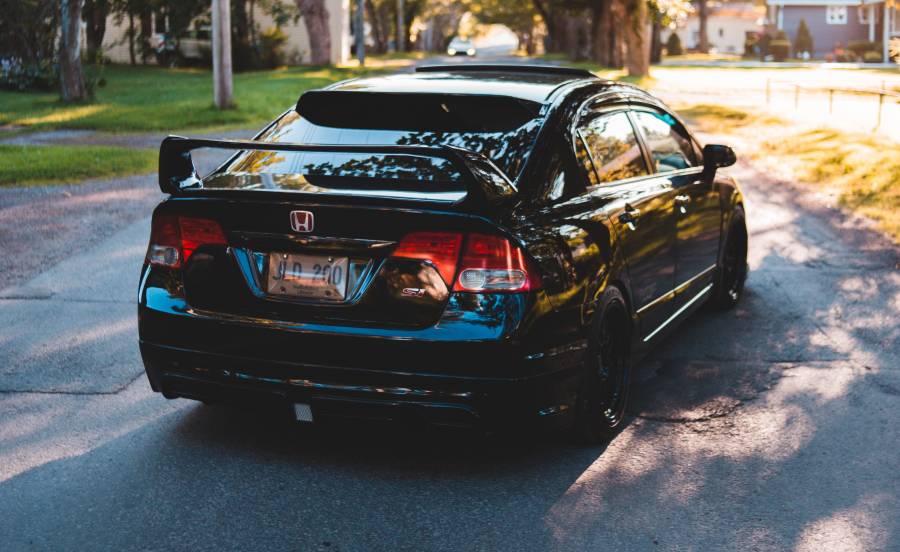Quick Navigation
If you encounter a G80 differential locking problem, you may lose control over the rear tires.

Various locking differential issues can be a nuisance to the driver.
How Does The System Work?
If you drive at locations with low traction facilities, you need specific features in your car that can assist you with the situation.
The G80 lock system provides the best solution for slippery slopes and wet roads.
It is an automated mechanism that activates whenever there is a possibility of low traction.
The G80 lock system works according to your car’s rpm. There are two-speed limits necessary for locking and unlocking the differential in the rear wheels.
Moreover, the driver does not have to optimize any modes to functional this system.
Potential Problems With G80 Locking Differential
Following are some of the common G80 locking differential problems.
Uncontrolled Spinning
This G80 lock differential problem kickstarts when you ignite the vehicle. It triggers while moving your car out of a parking lot or driving through a turn.
The vehicle must display maximum traction at these points to keep the rear tires aligned with the road.
Therefore, there is a particular speed by which both tires spin.
One of the two tires may start rotating instantly and rapidly in most cases. These can lower the traction, which is essential in these critical movements.
The tires may stop spinning after some time; however, it is not usual.
Your vehicle may also lose its balance due to this continuous spinning causing the G80 locking differential problems.
If the situation happens on slippery slopes, you may lose control of your vehicle. On some rare occasions, both tires may start spinning simultaneously.
It is a dangerous scenario and can cause accidents.
Locking And Unlocking
The G80 lock system effectively works when it engages and disengages the tires at precise moments.
The flywheels present within the system are responsible for initiating this action.
Locking is crucial when there is minimal traction, and unlocking usually happens when your car surpasses the 20-mph limit.
Afterward, the system does not activate unless you lower the car’s speed at a turn or move through any slippery points.
However, the system does not trigger the locks, and your tires remain at a differential speed all the time.
As a result, you experience the G80 locking differential problems.
Persistent Noise
Another prevalent G80 locking differential problem is the sound production and leaking oil. You can hear the muffled noise from the lock unit below your vehicle.
You may also notice the oil or a thick contaminated liquid dripping from the chamber. The liquid is usually yellowish and has a medium consistency.
The noise is not exceptionally loud, and you might have to get closer to the unit to hear it. However, these factors can alter the locking and unlocking mechanisms.
As a result, the system does not function optimally, and you can go through other interrelated G80 locking differential problems.
Causes Of G80 Locking Differential Issues
Following are some of the underlying reasons behind the G80 locking differential problems.
Mechanical Damage
The G80 lock system consists of a flywheel attached to a governor. It signals the action of the G80 lock system.
It engages and disengages the clutch and allows the car to balance the wheel speed.
Consequently, it can lock and unlock the rotatory motion of the tires through the axle shaft.
Therefore, it is evident that the entire system works on metal machinery. Any damage to these parts can result in the G80 locking differential problems.
In some cases, the parts of the components fall off due to wear or tear. The damage usually occurs to the flywheel.

It has gears that must rotate to initiate the working of the rest of the locking system.
The broken pieces of the gears or other components act as a barrier to the motion necessary to lock and unlock the wheels.
To function optimally, the structure of the flywheel should remain intact.
The broken or defective gears can impede or halt the movement of the flywheel governor leading to G80 locking differential problems.
Fluid Contamination
In some cases, G80 locking systems have a lubricant that minimizes the friction that may occur during the movements inside it.
However, it is not a necessary condition; the lock unit may or may not have it.
Nevertheless, these fluids can also damage the components, and they can cause changes to the structure of the metal.
Consequently, it may weaken over time and begin to fall apart.
The fluid may also start leaking from the unit cover and cause the G80 locking differential problems.
It usually becomes contaminated if it remains unchanged for a long time or the oil contacts it through any leaks in the surrounding chambers.
Solutions
Following are some of the solutions you can employ to target the G80 locking differential problems.
Replacing The Parts
Most G80 locking differential problems arise when there is a fault within the unit. To find out the exact reason, you must check within it.
You can unscrew the cover and access the entire system.
You can thoroughly analyze each part and then check for the ones that show any signs of damage causing the G80 locking differential problems.
Usually, the crown gear that is the most significant and central part is affected. A pinion wheel is located on the inside at the rear end.
You must take out these parts by detaching the screw.
Once you remove the crown wheel, you can access the rest of the system. Afterward, you should also assess the condition of the pinion wheel.
You will have to replace these parts with the newer ones as there is no particular and reliable way to fix their structures.
You can secure them through the standard bolts and screws.
If you are unsure what particular region in the locking system is not working, you can accelerate the tires.
Place a camera near the unit to record the movements and determine the functional and non-functional parts.
Changing The Lubricant
You can prevent the G80 locking differential problems by using a potent fluid that does not interfere with the structure of the components.
You don’t need to use any additives for the system. You can also change the gasket and use a silicone coating to protect it from abrasive damage.
Thoroughly clean the chamber and the cover, and remove the contaminated fluid. Afterward, you can add the new lubricant.
Conclusion
The G80 locking differential problem can exist in all new and used vehicles. You can quickly sort out these issues with some inspection and analytical skills.
Once you pinpoint the precise cause of the trouble, you can work out the potential measures. Therefore, you do not have to seek professional help in most cases.
However, if the problem persists, it is ideal to contact the manufacturers or the experts.
You can work on the components present on the front end of the locking unit. However, fixing the parts at the rear can be difficult.
Thus, for such matters, you need to call in the experts.

Patrick started his love affair with cars in his childhood. Over the years, he claims a sturdy hold on his driving skills, along with a thorough understanding of cars. We can expect some interesting, holistic, and pleasurable blogs with his flair for writing and his love for cars.
Being a car enthusiast, Patrick has experience comprising of two decades in which he has ridden some of the meanest and strongest machines in the automotive industry. His previous avatars include an automotive professional, photographer, and journalist, and you will certainly experience the roundness of experience in his piece on this site.
In his second decade of reviewing cars and analyzing tools, Patrick is all set to give you convincing, reliable, and the latest information regarding what’s happening in the automotive industry. Currently, he owns a BMW Z3 but cannot get his eyes off Aston Martin DB5. He is a car enthusiast; he loves cooking and listening to music, especially jazz. Here are some of the pieces written by our ace author.






